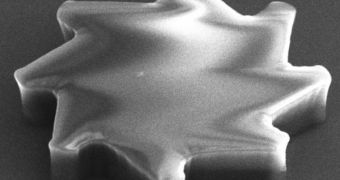Experts at the University of Rome, in Italy, proposed last year that small-scale motors might be powered by bacteria, an idea that caught on well in the scientific community, and spawned a number of follow-up studies. The physicists say that, in principle, if you attach self-propelling bacteria to a cog, then the microorganisms will begin to move the structure.
In their experiments, an asymmetrical cog was placed inside a pool of living bacteria, and it was left there. The goal was to allow the bacteria to move it automatically. Critics to this approach said at the time that waiting for this to happen would be a bit like trying to extract kinetic energy from the random motion of particles, which is widely known as the Brownian motion. However, the Italian experts highlighted the fact that, while a Brownian system was naturally kept in balance, a bacterial one was not.
The net income of energy is dictated solely by the amount of nutrients that the bacteria have at their disposal, to multiply. This seemingly minor detail allows for the time symmetry to be broken, and for energy to be extracted from the system as direct motion. Luca Angelani and the UR team recently managed to construct an asymmetric cog, and “persuaded” a colony of E. coli bacteria to move it around, at about one rotation per minute (rpm). The experts reveal, however, that not all bacteria appear to be contributing equally to the spinning motion.
They say that, out of maybe ten E. coli that attach themselves to the teeth of the cog, two at the most actually exert force on the structure, in order to move it. This means that, theoretically, it may be possible to make the cog spin faster, if only more of the bacteria are persuaded to push on the wheel. At this time, the E. coli moves the cog at a speed of about two micrometers per second, whereas the maximum speed that this microorganism has is of around 20 micrometers per second.
The innovation could be used in a wide array of research fields, ranging from medicine to nanotechnology. Self-propelling micro-machines, micro-pumps and mixers for microfluidics could all become possible through bacteria-driven motors, the team concludes, quoted by Technology Review.

 14 DAY TRIAL //
14 DAY TRIAL //